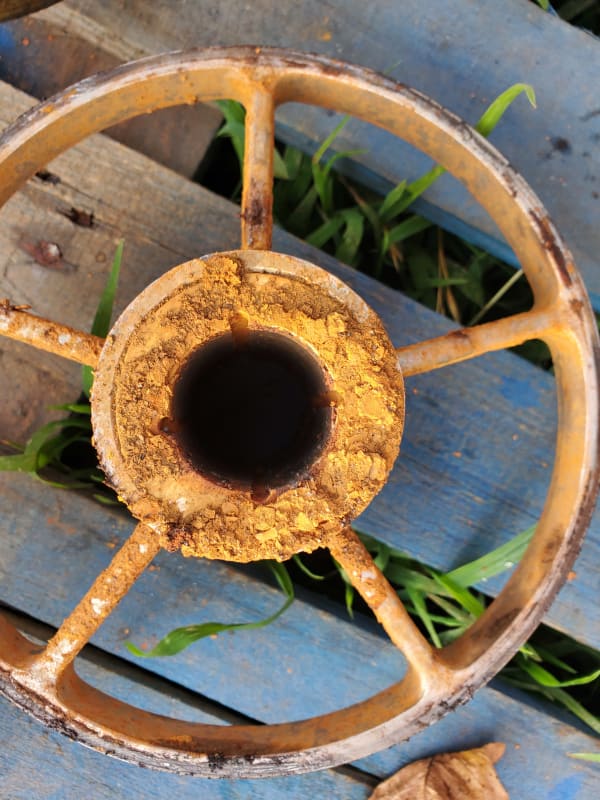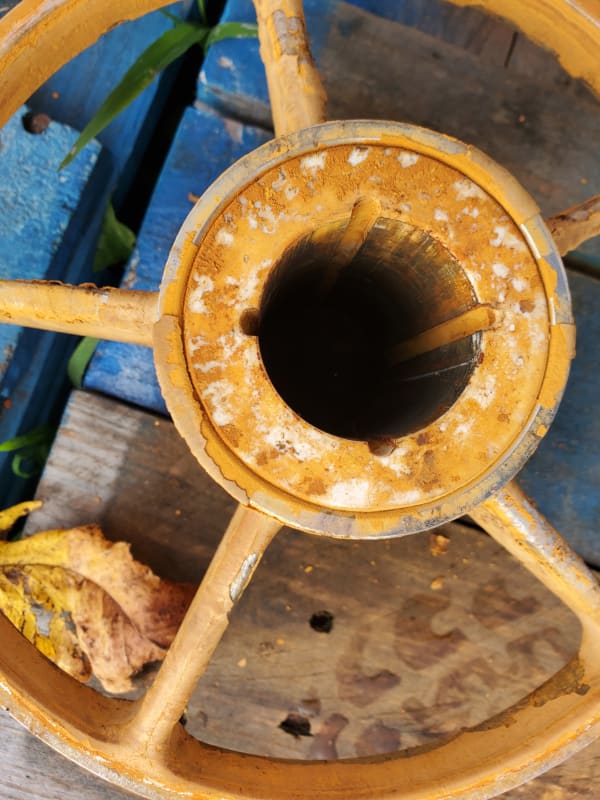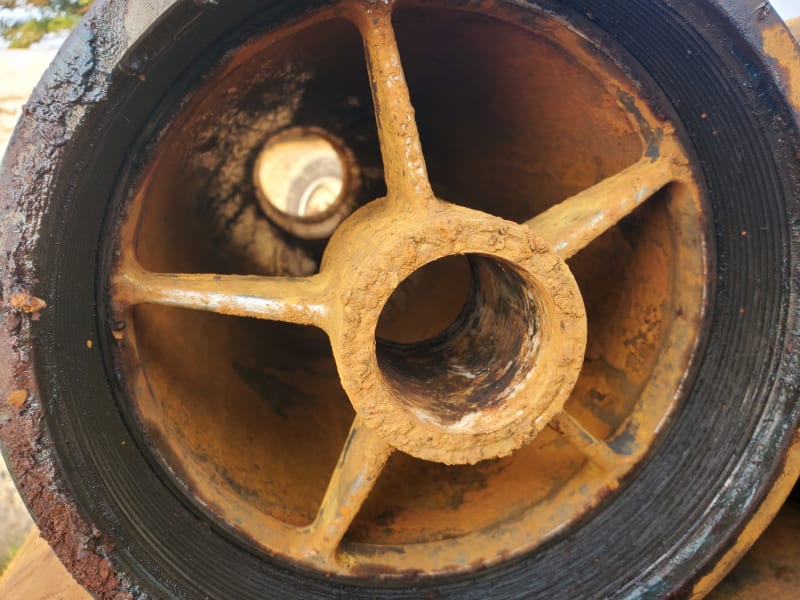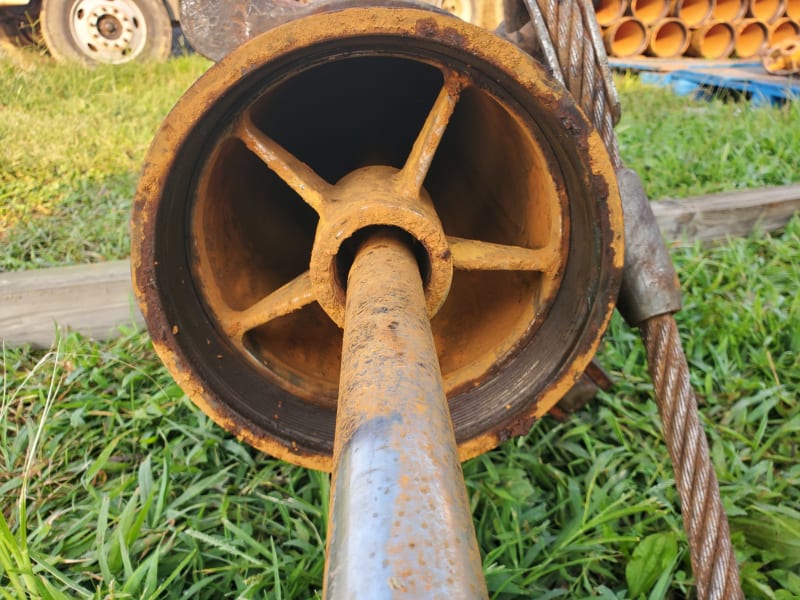NurseryPump
Agricultural
Hi. We are having issues with low reliability on a vertical turbine pump used for irrigating nursery stock. We had a failure the other day requiring is removal. It moves 700gpm at 640TDH with 290ft of column and an open lineshaft.
Upon removal it was found that the bearings in the pump had failed and wiped out two bearings above it in the column. This well has previously had issues with lineshaft breakage due to failure of cutlass rubber bearing failures due to lack of sufficient prelube. After that failure vesconite lineshaft bearings were installed to provide greater dry running durability. The pump failed after that in a similar way to this time taking out the pump bearings and bearings above it. The discharge head was leveled and the number of bearings doubled by going from 10ft column sections to 5ft to increase rigidity.
At this point we believe our root problem is the amount of sand and iron being pumped is causing premature failure of the bearings in the pump. Is there a way to improve pump reliability in these conditions short of having a new well drilled? We have gone from needing an annual overhaul to making it slightly over two years.
Thanks
Upon removal it was found that the bearings in the pump had failed and wiped out two bearings above it in the column. This well has previously had issues with lineshaft breakage due to failure of cutlass rubber bearing failures due to lack of sufficient prelube. After that failure vesconite lineshaft bearings were installed to provide greater dry running durability. The pump failed after that in a similar way to this time taking out the pump bearings and bearings above it. The discharge head was leveled and the number of bearings doubled by going from 10ft column sections to 5ft to increase rigidity.
At this point we believe our root problem is the amount of sand and iron being pumped is causing premature failure of the bearings in the pump. Is there a way to improve pump reliability in these conditions short of having a new well drilled? We have gone from needing an annual overhaul to making it slightly over two years.
Thanks




